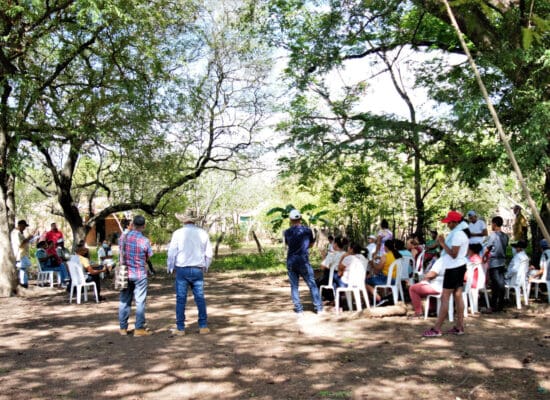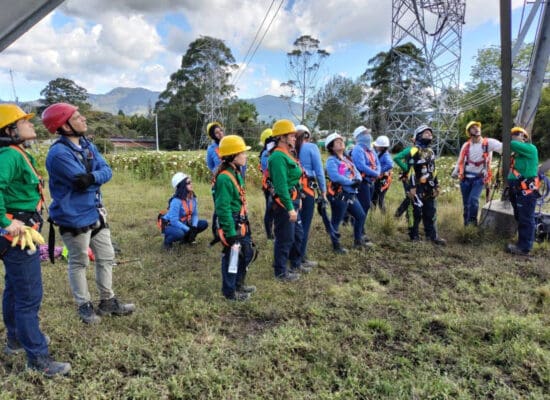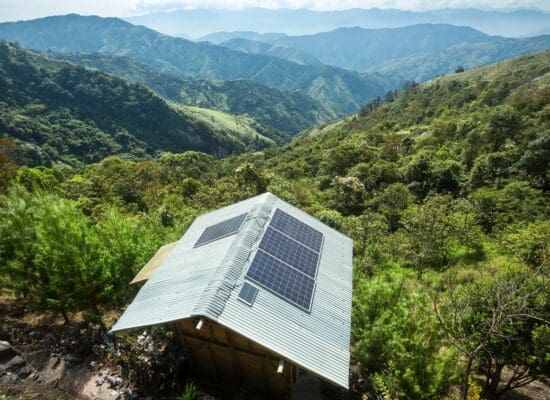
The need to tackle climate change and move away from fossil fuels is changing the electricity sector around the world. These changes are also being shaped by the rise in new technologies that make it easier to generate renewable energy, such as solar and wind power, locally. Consequently, the sector is moving towards a more flexible and resilient system that lets electricity users play an active role.
Renewable energy generation models driven by local groups of end users, known as energy communities, are widely implemented in Europe and North America, and they are also starting to emerge in Latin America. These groups are motivated by energy autonomy, reducing emissions, developing the local economy, and reducing electricity costs. While all types of energy communities aim to increase user participation in the energy sector, each country is adopting different definitions and rules for integrating them, depending on national interests and priorities.
In Colombia, the term has gained popularity as part of the government’s just energy transition plan, with a strong focus on community leadership and ownership. The strategy aims to benefit remote and vulnerable populations that lack either electricity itself or access to quality electricity services. Through the lens of social justice, the strategy seeks to bring renewable energy to all corners of the country, contributing to Colombia’s just energy transition.
The two pillars of Colombia’s energy communities strategy
The first pillar of the strategy is about identifying and prioritising communities in the areas most in need. So far, 18,471 communities across the country have applied to participate. By April 2025, 285 energy communities had been selected. As the rollout of the strategy continues, communities that meet particular criteria will be prioritised for implementation. Those that are selected will be partly or fully financed and will receive training to manage, operate, and maintain the projects.
The second pillar is about creating a regulatory framework to support new distributed energy generation and self-consumption systems. This framework will introduce preferential rates and simplified processes, making the electricity market more flexible and encouraging investment in energy community projects from communities and businesses. These regulatory and market incentives will reduce the need for public funding and make energy communities a financially viable option through potential savings and revenue generation.
The regulatory framework has its roots in Colombia’s 2022–2026 National Development Plan, which determined that “users or potential users of energy services may form energy communities to generate, commercialise, or efficiently use energy through non-conventional renewable energy sources, renewable fuels, and distributed energy resources.”
New regulation paves the way for more energy communities in Colombia
The most recent regulatory milestone for energy communities is Resolution 101 072, issued by Colombia’s Energy and Gas Regulatory Commission (CREG) in April 2025. CREG oversees the regulation of the electricity sector, and this new resolution complements previous policies by providing detailed guidelines on connection, legal status, compensation, and other operational parameters.
Resolution 101 072 has the potential to significantly increase the formation of energy communities by laying out the technical procedures for integrating them into Colombia’s electricity system. It does this by creating two new types of legal entity that reflect different ways of operating in the electricity market:
1. Collective self-generation (AGRC). AGRC is a shared self-consumption scheme, where several users group together to generate their own power, consume that energy collectively, and feed any surplus into the grid. This model serves primarily to meet the group’s own power demand.
- Maximum capacity: Up to 5 MW – the sum of the community’s generation units.
- Geographical scope: All generators and users must belong to the same electricity market and be connected to the same local distribution system.
- Legal representation: The community needs to form an associative agreement, known as a community energy agreement, to be formally recognised as an energy community.
- Connection: The connection process follows the rules for individual self-generators.

2. Collective distributed generation (GDC). GDC is configured as a community power plant that focuses on generating and selling energy to the grid. This model is for energy communities that intend to inject all the power produced into the local grid.
- Maximum capacity: Up to 5 MW – the sum of the community’s generation units.
- Geographical scope: All generators must feed power into the same electricity market and be connected to the same local distribution system.
- Legal representation: The community needs to form a community energy agreement to be formally recognised as an energy community.
- Connection: The connection process follows the rules for distributed generators.

In addition, Resolution 101 072 sets out the conditions under which these models can operate in areas where there is no connection to the grid. By combining the two models, it is possible to develop independent microgrids that integrate generation, consumption, and energy storage – supplying electricity to the most isolated areas of the country.
The new legal framework is critical because it allows multiple users to benefit from a single renewable energy installation without making individual investments or requiring a physical connection to the asset. By using the existing local distribution network, users in different places can jointly benefit from a collective renewable energy system. When communities use these models, individual users won’t be directly connected to the generation system; instead, electricity will be measured where it is injected into the grid and at each user’s point of consumption. At the end of each month, the electricity fed into the grid will be credited against each user’s consumption. This arrangement expands the options for users to become “prosumers” – both producers and consumers of energy. Previously, only those who were able to install systems on their own property could generate and consume their own electricity or create isolated microgrids without using the local distribution network.
Challenges in achieving the potential of energy communities
Despite the progress made by the new regulation, this alone is not enough to fully unlock the potential of energy communities. Several challenges remain, including the need for accessible financing (including public and private options), technical support, and capacity building to manage, operate, and maintain the systems over time. The government’s strategy of identifying and supporting communities is an important first step, but so far it has not been enough to deploy energy communities at scale. To streamline the process of approving projects, there also needs to be better coordination among the key actors, such as the grid operators, the energy retailers, and the Ministry of Mines and Energy. Given that the regulation is so recent, these actors are still adjusting to the new conditions and there are no standard time frames for responding to user requests, which makes becoming an energy community a time-consuming and complex process. Finally, there is a need to raise awareness in remote communities of the opportunity to become an energy community and to support project design and implementation in ways that genuinely improve quality of life in these communities.
By creating inclusive frameworks, prioritising vulnerable populations, and strengthening social cohesion and local development, the strategy of encouraging energy communities is shaping up to be a promising one for driving a just energy transition in Colombia. The government has made substantial efforts towards implementing the strategy. However, for the impact to be truly transformative, more collaboration is needed among all stakeholders. This collective effort will be essential if we are to harness the potential of energy communities to accelerate decarbonisation and improve community well-being and territorial development.
Juanita Giraldo is energy community leader at Solenium, where she structures innovative strategies and projects that integrate renewable energy, energy-efficiency technologies, and the active participation of end users. Juanita worked on Colombia’s first energy community project connected to the national grid, which was developed in the El Salvador neighbourhood of Medellín. She has a degree in environmental engineering and a postgraduate degree in alternative energies from EIA University. She has experience in the academic and business sectors in the fields of energy transition, democratisation, and decentralisation of the electricity sector.
Stay Informed and Engaged
Subscribe to the Just Energy Transition in Coal Regions Knowledge Hub Newsletter
Receive updates on just energy transition news, insights, knowledge, and events directly in your inbox.


